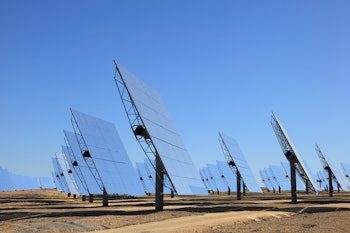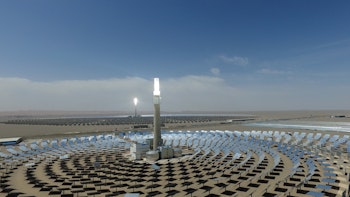
Grids worldwide are turning to renewable energy as the need to decarbonize the energy system increases. Solar photovoltaic (PV) plants and wind farms are now by far the largest sources of new electricity generation being installed worldwide.
There are good reasons why PV and wind are so popular. They are mature, highly scalable technologies and are supported by robust global supply chains.
Most importantly, they are cheaper than any other form of new generation, according to the annual levelized cost of energy analysis published by Lazard, the financial advisory and asset management firm. However, these benefits come with a cost to the grid.
PV and wind only work when it is sunny or windy, so when there are a lot of these variable renewable energy assets on the grid the electricity system suffers from a feast-or-famine situation. This is particularly true of PV, where output is strictly related to the time of day.
Countries that have installed large amounts of PV are already experiencing challenges from what is known as the duck curve, which is the mismatch of energy supply and demand that happens in the evening as the sun goes down and people get home from work.
Solar output starts to fall just as household demand begins to rise, forcing grid operators to plug the gap using dispatchable generation—typically from expensive, polluting gas peaker plants. As the push for decarbonization continues, these peakers will eventually have to be decommissioned.
What will replace them? Lithium-ion battery systems may be able to cover energy shortfalls of up to four hours, but when used for longer durations they become prohibitively expensive. Low-carbon hydrogen could be used instead of natural gas, but it is expensive and inefficient to make.
Lithium-ion battery systems may be able to cover energy shortfalls of up to four hours, but when used for longer durations they become prohibitively expensive...
Other options include advanced geothermal or nuclear systems, but these technologies are in their infancy and may take decades to become commercially viable. In areas where there is plenty of sunshine, though, there is a technology that can be used to help PV on the grid today.
Addressing the challenge of traditional solar
That technology is called concentrated solar power or CSP. It works by collecting the sun’s heat and using it to create steam that then drives a turbine. Today, CSP plants are built so the heat does not drive the turbine directly but is stored in a thermal storage medium for use whenever needed.
This medium is usually molten salt, which is a relatively inexpensive and readily available resource. CSP plants with molten salt thermal storage can store vast amounts of heat and use it to deliver power for hours on end.
Nowadays CSP plants are routinely designed with storage capacities of 10 hours or more and can have an output comparable to that of a small coal power station. “CSP with energy storage has the ability to provide stable, scalable and reliable power,” says the analyst firm GlobalData Technology.
“Thermal storage helps retain solar heat generated during the sunny period to convert it to electricity when needed. Thermal storage thus helps in making solar power dispatchable, making it a reliable source of power generation.”
This dispatchability is something that no other mature renewable energy source, bar hydro, can offer today. And the value of dispatchability is increasing, which makes CSP an increasingly attractive proposition to investors.
In greenfield sites, installing CSP can offer greater returns than either PV or wind because the output can be timed to match peaks in demand when electricity prices are at their highest.
And some markets offer special high regulated tariffs for evening generation, which CSP is uniquely positioned to address. CSP can also be installed in brownfield sites, for example to replace or complement PV.
As older PV plants near decommissioning, a conversion to CSP could increase the value of the asset by turning a non-dispatchable plant into a dispatchable one.
Newer PV plants can work in synergy with co-located CSP, allowing grid connections to be used around the clock as thermal storage-based generation takes over from traditional solar in the evening and at nighttime.
CSP can also work in conjunction with end-of-life coal plants, taking advantage of the decommissioned plant’s grid connection, boiler, turbine and other balance of plant.

A wealth of opportunities
Although CSP today is primarily used for supplying electricity to the grid, the technology can also be readily deployed in off-grid or remote environments such as mining concessions and rural processing centers.
Here, CSP has an advantage over other low-carbon sources of generation not only because it is fully dispatchable but also because it can be a source of process heat. CSP technology is highly scalable, with plants ranging in size from a few megawatts up to almost a gigawatt.
An emerging opportunity for the technology is to help power electrolysis for low-carbon or ‘green’ hydrogen production. Green hydrogen is being heralded as a replacement for fossil fuels in a wide range of applications, from powering long-distance transport to serving as fertilizer feedstock.
Minimizing green hydrogen costs will require electrolyzer capacity to be used as fully as possible, something that might not be feasible when relying solely on intermittent renewables such as wind or PV.
However, if PV is used to drive electrolysis during daylight and CSP with thermal storage takes over at night, it is easy to achieve round-the-clock production, improving the competitiveness of green hydrogen supplies.
Falling costs, rising performance
A final point of interest to investors is that CSP costs have fallen by 67% between 2010 and 2021, according to the International Renewable Energy Agency. This is on a par with the cost reductions seen in onshore wind and more than those experienced in offshore wind over the same period.
Meanwhile, the average capacity factor of CSP plants has risen by 41%, reaching 80% in Chile’s Atacama Desert. This compares to a maximum capacity factor of around 29% for PV.
At Pacific Green, we are developing even more advanced CSP plants based on market-leading experience gained from designing, building and operating projects on four continents.
We are experts in CSP’s dominant power tower and parabolic trough technologies and have ample experience in the design and operation of plants with molten salt thermal storage. To find out more, contact us now.
Publish date: 11 October, 2022